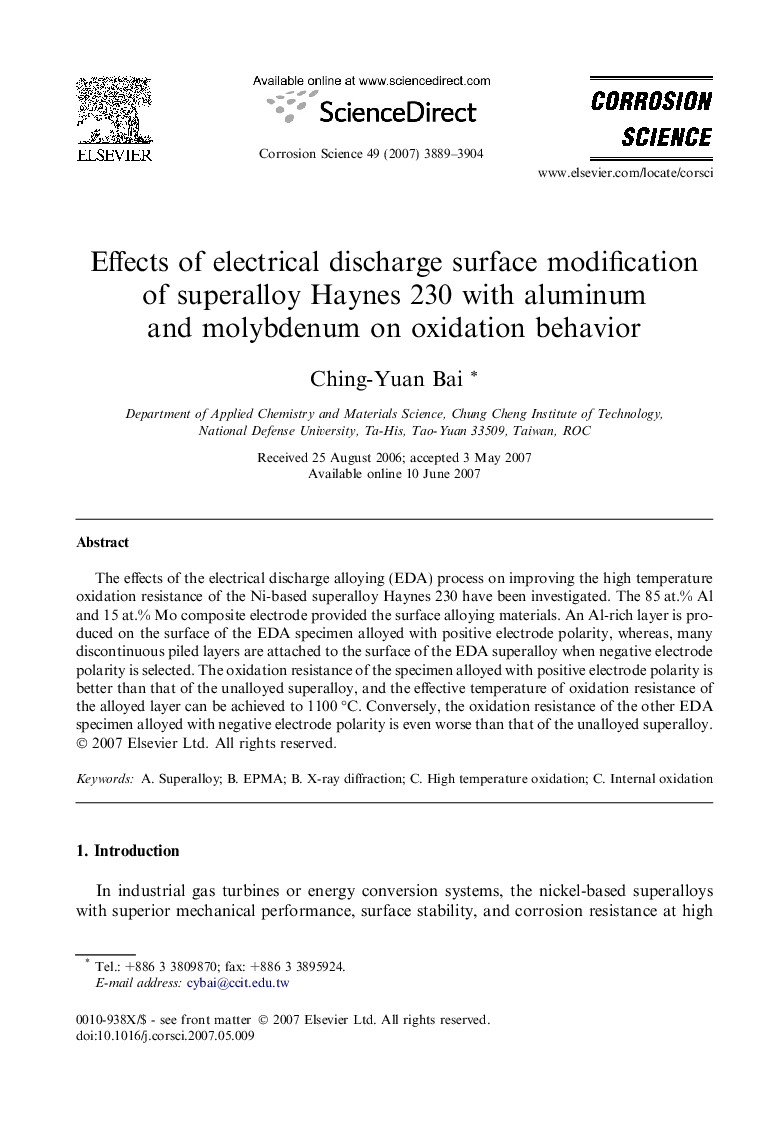| Article ID | Journal | Published Year | Pages | File Type |
|---|---|---|---|---|
| 1472088 | Corrosion Science | 2007 | 16 Pages |
The effects of the electrical discharge alloying (EDA) process on improving the high temperature oxidation resistance of the Ni-based superalloy Haynes 230 have been investigated. The 85 at.% Al and 15 at.% Mo composite electrode provided the surface alloying materials. An Al-rich layer is produced on the surface of the EDA specimen alloyed with positive electrode polarity, whereas, many discontinuous piled layers are attached to the surface of the EDA superalloy when negative electrode polarity is selected. The oxidation resistance of the specimen alloyed with positive electrode polarity is better than that of the unalloyed superalloy, and the effective temperature of oxidation resistance of the alloyed layer can be achieved to 1100 °C. Conversely, the oxidation resistance of the other EDA specimen alloyed with negative electrode polarity is even worse than that of the unalloyed superalloy.
